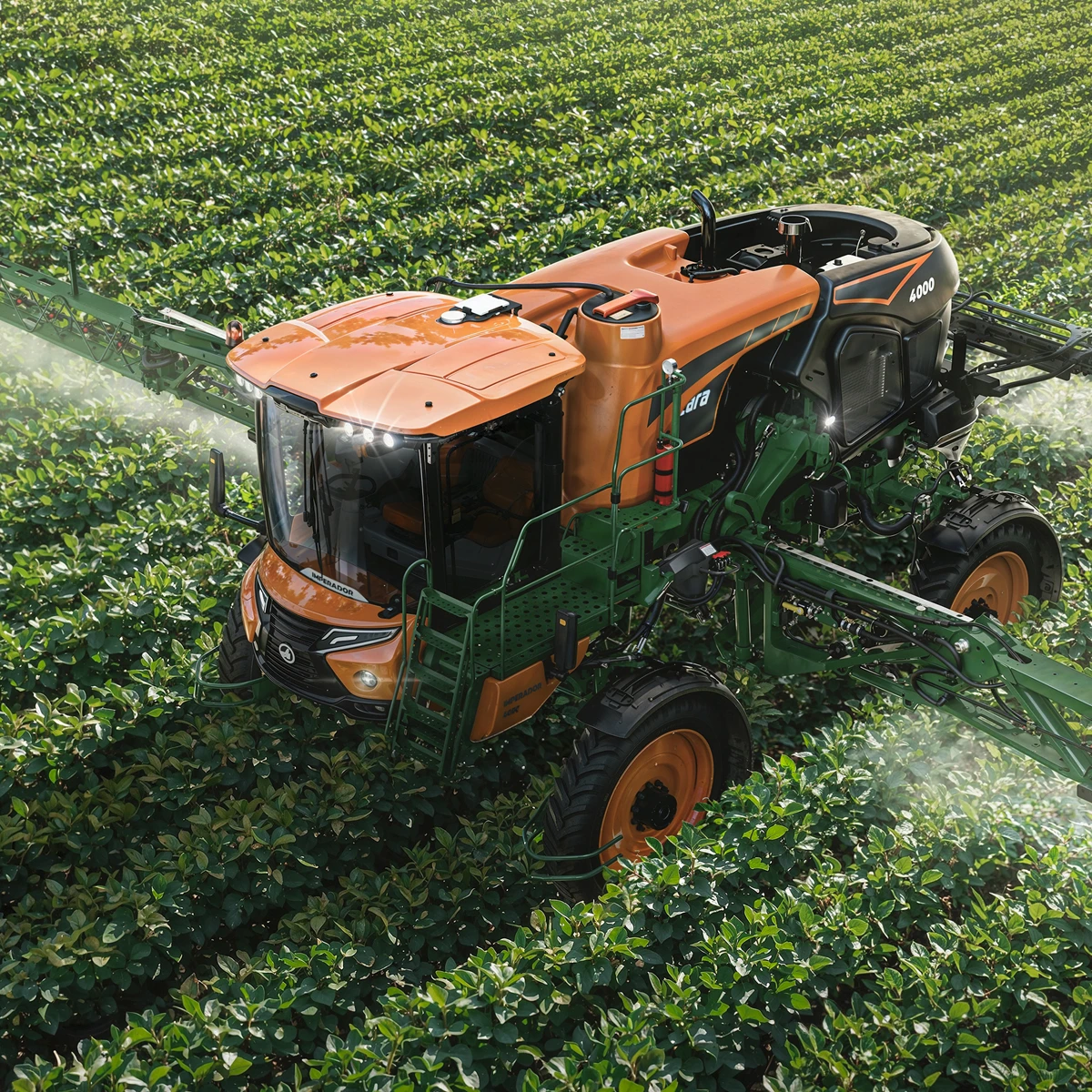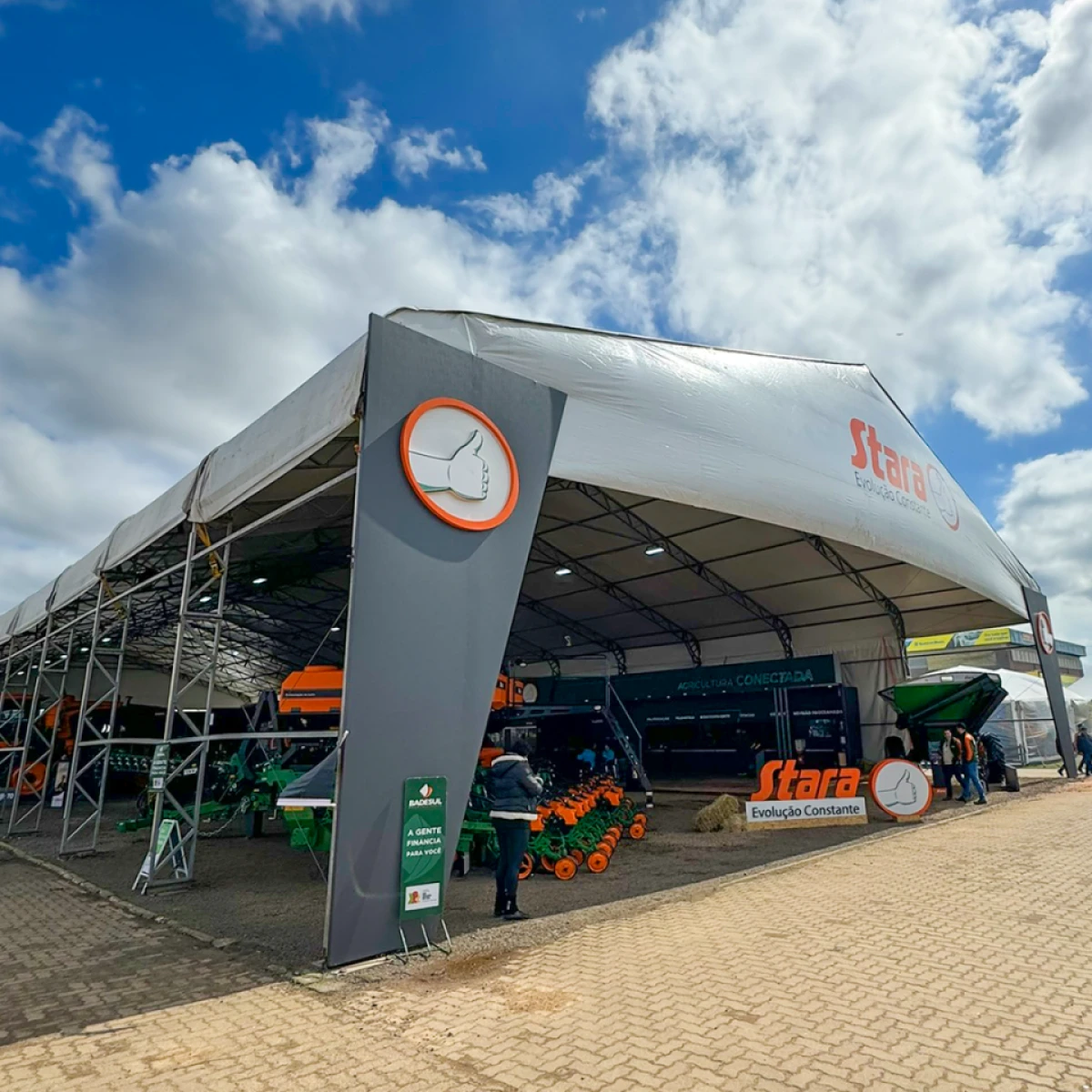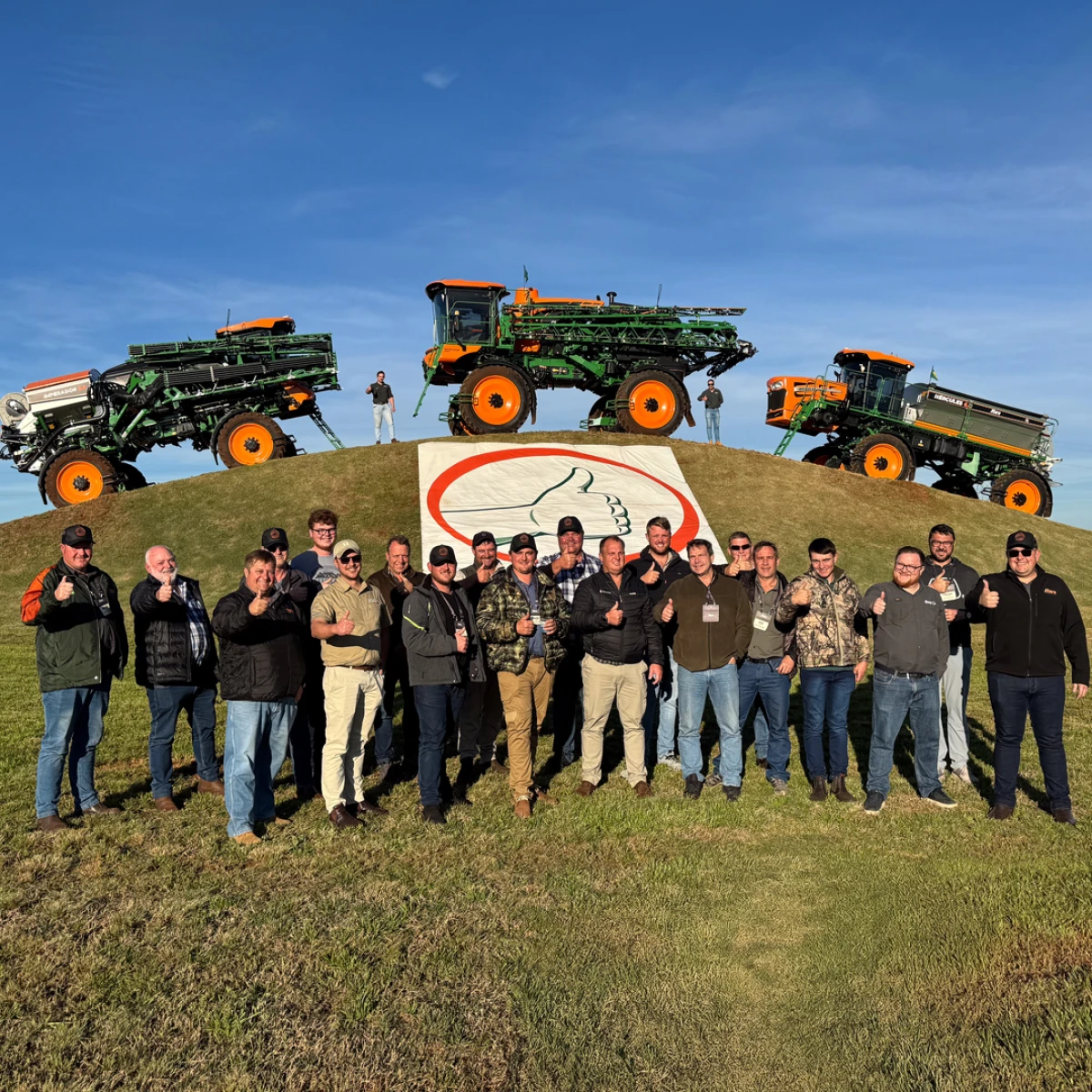This piece covers the manufacturing processes of the Stara factory in the branch in the city of Carazinho, the state of the Rio Grande do Sul. The manufacturing process started back in December 2010. Nowadays, the branch employs around 420 employees. This number is twice in less than two years. The main processes of the unit are: foundry, machining, and painting. In total, the factory units add 12,000 m².
In addition, the branch houses the administrative area that comprises the Management, Human Resources, and Department of Tax. Additionally, the unit comprises the Methods and Processes Department, Environment Department, Warehouse, Occupational Safety and Health, Maintenance, Manufacturing Support, and Molding. Not to mention the Employees’ Association.
The director of the Carazinho branch, Élio Schmatz, explains that the unit holds the planting line, subsoilers, corn head, spraying line, and grain carts. “The branch in Carazinho manufactured 92% of the total production in 2021 until August 2022”, he says.
To the Manufacturing Engineering supervisor, Igor Barp, one of the reasons that make Stara so competitive in the market is having a foundry process: “It enables us to manufacture at the speed and quantity we need”.
Click here and see how the Stara factories work.

Foundry employees Felipe Augusto Cruz, Renato Frank and Leonardo Santos Theodoro
The Foundry manufactures most of the cast parts used to manufacture the Stara machinery. It all starts in the Engineering Department in the headquarters (in the town of Não-Me-Toque, the state of the Rio Grande do Sul). The department engineers the part and forward it to be analyzed by the Process Engineering (Foundry/Machining/Painting) to make sure of the process viability.
When the part is approved, the project process starts via CAD (Computer-Aided Design) of the tools that form the part, such as the core box and molding plates. Then, they are manufactured.
The Molding sector makes the core boxes – the hollow section formation of the part – and production and repairs the molding plates and aluminum and polyurethane tools for the cast parts. In other words, for the liquid metal flow.
The Core Molding manufacturers the core boxes (made of sand, resin and catalyser) by means of two core box blowers. Then, the components are sent to the Molding, where green sand is applied (bentonite, coal, and sand) using two automated molding pieces. After the molding pieces are filled in with green sand – each set comprises two sections (bottom and top) – they are sent to the manufacturing line. There, the core boxes are inserted in the bottom section. Next, the top molding piece is closed. After that, they are sent to the filling process to receive the liquid metal.
To prepare the liquid metal loads, three types of raw-material are used: steel scrap (shipped from the Stara headquarters), pin iron and sprue runners (also called return). After the load melt process is finished, from 1550 to 1580 °C, a liquid metal specimen is analyzed by the metallurgic lab that evaluates the elements of the specimen by the spectrometer. If it is required to adjust some element, the lab calculates and informs the smelter so the adjustment can be carried out.
The next step is the Filling process, where the liquid metal is filled in the molding pieces. After the parts are cooled down, they are taken to the Demolding process. By a screening mill, where the part is demolded, the sand excess is removed. Then, it is required to move it for the sprue runner breaking to separate the parts.

The employees Renato Frank, Igor Barp
and Alex Silva in the Moulding Sector
Next, the part is sent to the shot blasting process for full part cleaning to remove the foundry sand from the smelting process. The last step of the foundry is the Burring process which finishes the part. To remove the burrs, automated machines are used. For smaller burrs, manual processes are performed.
The sector supervisor, Renato Frank, explains that plenty of tests are done to manufacture all components: “During the manufacturing process, an analysis is carried out of all properties of the materials. The monitoring only finishes when the last specimen collecting is performed in the last molding piece to make sure of the part quality. All specimens are duly logged and monitored; he emphasizes.
Machining

The employees Emerson Steinbrenner da Silva, Marcelo Padilha de Andrade and Leandro Hermes
The last manufacturing process is Machining. It shapes the part, dimensions, or surface finish to adjust the slug according to the product project.
The prototype viability analyzis is also carried out in this process. The machining is applied to the first part. Then, it is sent to Quality Control. This department uses 3D equipment to perform the measurement and issue a report for each part highly efficiently. If the part is approved, the standard manufacturing continues. Otherwise, the required adjustments are performed. This very same process is carried out on all first manufactured parts. On each machine, required measurement instruments are available for every process.
The department uses process instructions for every part so that the operation becomes standard. The last step is measuring the parts. If they are in accordance with the technical drawing, they are ready to be undergone to next step. The Machining and Painting coordinator, Luis Eduardo de Carvalho, talks about the sector: “The Machining sector features robot cells, lathes, and machining centers supplied by robots to increase productivity.”
Painting

The employees Alexandre Brizola, Jocimar, Vieira dos Santos, Adão José da Silva, and Paula Oliveira
The last process is the Painting. It is an electrostatic process where powdered paint is used in orange and green colors. The parts are loaded onto an automated monorail system and taken to the processes of rinsing, drying, painting, and strain-hardening. Then, they are unloaded from the monorail system. The painted parts, before they are shipped, go through quality analyzis, such as hardening, layer thickness, and adherence, among others. In the Shipping sector, the packaging is performed to store and load the parts.










